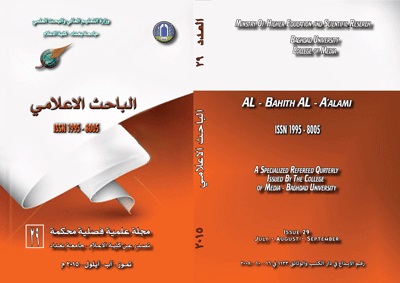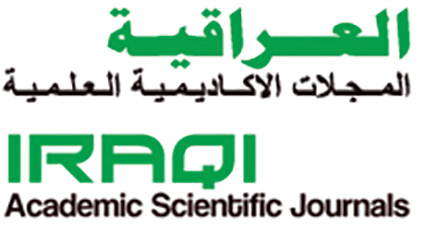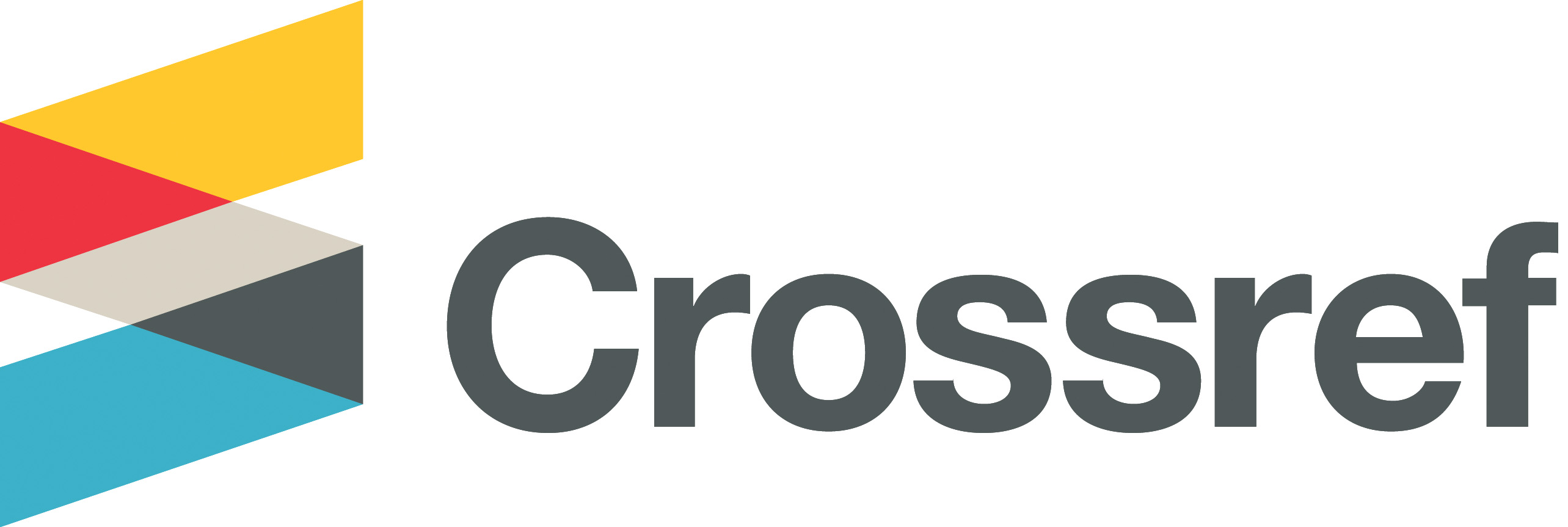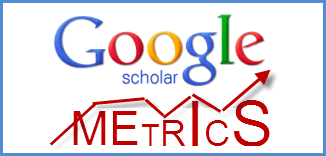اليات التغيير الاجتماعي في عصر الاتصال الرقمي وانعكاساتها على الرسالة الاتصالية
DOI:
https://doi.org/10.33282/abaa.v7i29.184الكلمات المفتاحية:
اليات، التغيير الاجتماعي، الاتصال الرقمي، الرسالة الاتصاليةالملخص
كان لظهور منافذ الاتصال الجديدة التي تعد ثمرة تطور تكنولوجيا الاتصال متجسدة بخدمات (الفيس بوك وتويتر والمدونات ويوتيوب وماس سبيس وفريندستر وفليكر ولينكد ان فضلا عن الخدمات المباشرة للفايبر والواطس اب والتليكرام وجات ان)دورا مهما في تغيير بنية المجتمعات العربية هذه المجتمعات التي تعد الى وقت قريب من المجتمعات المغلقة وغير قابلة للتغيير ،انبثقت اهمية البحث من اهمية الموضوع كونه من مستجدات العصرعلى الساحة الاعلامية وواجه استجابة جماهيرية وتقبل رغم ماعرف عن المجتمع العربي انه لايتقبل التغيير فرافق ذلك ظهور مصطلحات بحاجة الى تحديد مفاهيمها منها الاعلام الجديد والاعلام البديل والمواطن الصحفي والمواطن الرقمي والنضال الالكتروني.
اصبح للاتصال الرقمي عبر الانترنت دور في تشكيل الراي العام وتحديد الاتجاهات وتلخص البحث بتساؤل رئيس هو (ماطبيعة التغييرات المجتمعية التي احدثتها التكنولوجية الرقمية بالمجتمعات العربية؟وما اليات هذا التغيير واين تكمن ؟ في الرسالة الاتصالية ام بطبيعة الوسيلة التي تعاملت مع الجمهور افرادا وليس جماعات ؟) اذ اتخذ البحث من نظرية المجال العام لهابرماس منطلقا لمناقشة محاوره اذ تمثل نظرية المجال العام حلبة النقاش الذي تدور فيها المساجلات وتتشكل فيهاالاراء والمواقف حول القضايا التي تجسد اهتمامات الناس وهمومهم . ورغم حداثة هذه الوسائل في العالم العربي لكنها انتشرت انتشارا سريعا كأداة للتعبئة الاجتماعية والسياسية في عدد من البلدان العربية وخلص البحث الى عدد من النتائج اهمها :ان وسائل الاتصال الرقمي ساهمت في رفع قدرات الجمهور والمنظمات والهيئات فزادت من مهارات المستقبل الذي تحول بوجود التفاعلية الى مرسل فظهر ما يعرف بالمواطن الصحفي والمواطن الرقمي.
كما تبين ان الانترنت بما توفره من خدمات التواصل الاجتماعي هي الاكثر تاثيرا في مستوى النشاط السياسي والاجتماعي في المجتمعات العربيةعن غيرها من وسائل الاتصال التقليدية
التنزيلات
المراجع
2) Karl Popper, The Logic of Scientific Research, Translated by Muhammad al-Baghdadi, Beirut, The Arab Organization for Translation, 2006, p. 63
3) Hamdi Abu Al-Futuh Attifa, former source, p. 29
4) Sherif Darwish Al-Laban, Interventions in the Alternative Media, Cairo, Egyptian Lebanese House 2011, p. 75
5) Mohamed Abdel Hamid, Communication and Information on the Internet, Cairo, World Books, 2007, p
6) Ibid., P. 19
7) ww.Georgtwn.Edu \ research \ pgi 98.8 HTML
www.nua.ie \ surveys \ index.cgi
8) Hassan Muzaffar Rizzo, Information Space, Beirut, Center for Arab Unity Studies, 2007, p. 237
9) Asmaa Abdel Hafez, Interactive Media Communication Technology in the E-Digital Space Age, Cairo. Dar Al-Arabiya Publishing, 2005, p.
10) Hosny Mohamed Nasr, The Internet and the Media Press, Kuwait, Al-Falah Library, 2003, p
*) Means the interconnection of texts, documents and Web sites that enabled the browser to access similar sites, which is not available by traditional means of communication
**) means that information on the web is transmitted in the form of consignments and not written online
13) Hosny Mohamed Nasr, former source, p
14) Nabil Ali, The Arab Mind and Knowledge Society, C1, Knowledge World Series, Kuwait, p. 369, 2009, p.
Quantum physics, or quantum physics, is a branch of physics that studies matter and energy at the level of elementary elements of atoms. Its basic hypothesis is that both time and space are absolute concepts that are not affected by the motion of objects. It explains the behavior of semiconductors used in electronic circuits with superconducting properties, And the energy that led to the detection of interactions between radio waves and the intentions of atoms, which revolutionized the science of communications with the presence of modern technologies and smart devices, which contributed to the emergence of social communication methods and diversity. (Nabil Ali, MS, p. 119)
** This is a modern branch that studies the precise internal structure of vital organs at the molecular level. This knowledge has revolutionized the study of living organisms by discovering the double helix that carries the genetic secret. Modern science has attempted to link quantum and molecular biology according to the logic of mathematics to develop communicative abilities and reach non - Is limited by exceeding the limits of time and space. Information technology has started the synthesis between these two sciences in the field of specialization by merging them under the name of "BioSilicon" and developing them for a basic building unit for the most efficient computer as well as the development of information technology. Vision nascent nanotechnology to achieve levels of miniaturization finite beyond imagination, and this will lead man to an advanced stage in the extreme forms critical confrontation between human and robot that transforms micro software into a network of electronic circuit microwave, a software that works accordingly communication techniques. (Nabil Ali M.s, p. 123
17) Mohamed Abdel Hamid, Communication and Information on the Internet, Cairo, World Books, 2007, pp. 30-38
18) Mohamed Abdel Hamid. Media Alternatives Alternative, Cairo, World Books, 2009, p
19) Ibid., P
20) Mohamed Abdel-Hamed, Theories of Influence and Influence Trends, Cairo, World of Books, 2010, p. 68.
21) Ali bin Shwail Al-Qarni, Social Media, Al-Jazirah Newspaper, Saturday, Issue 84 \ 4 \ 14, 30 \ 7 \ 2011
22) Supervisor of the chair of Al-Jazeera newspaper for the international press at King Saud University, Kulkarni @ ksu.edu.sa
23) Anthony Giddens, Introduction Fayez Sabbagh, Sociology, Beirut, Arab Organization for Translation, 2005, p. 511
24) Sharif Darwish Al-Laban, Interventions in the Alternative Media, former source, p. 75
25) Mr. Yassin, The Collapse of the Public Gap and the Rise of Information Space (www.htpt, 18/6/2014, on the book of the crisis of globalization and the collapse of capitalism, Cairo, Dar al-Nahda, 2009)
26) Darwish Al-Laban, Interventions in the Alternative Media, p. 76
27) Anthony Giddens, Sociology, former source, p. 512
* Ibn Khaldun mentioned in his introduction that patterns of values, norms and ethics are linked to the extent of the cohesion of the group and change these values and standards according to the change of the relationship of the group to the authority and the state, a reference to the evolution of human societies from the fungal state to the civil condition, which result in a change in human nature and methods of thinking and treatment from power
29) Group of Researchers, The Future of the Future, UAE, Emirates Center for Strategic Studies and Research, 2001, p. 203
30) - Baker al-Najjar, a previous source, p. 323
31) Media and the formation of values, p. 63
32) Sherif al-Laban, former source, p. 76
33) Ibid., P. 76
34) Sociology, former source, p. 726
35) Baqer Al-Najjar, Space and Transformations of Values, The Information and Public Opinion and the Industry of Values, Beirut, Center for Arab Unity Studies, 2013, p. 325
التنزيلات
Key Dates
منشور
إصدار
القسم
الرخصة
الحقوق الفكرية (c) 2019 Yousra Khalid Ibrahim, Walaa Muhammad Ali Hussei

هذا العمل مرخص بموجب Creative Commons Attribution 4.0 International License.


















